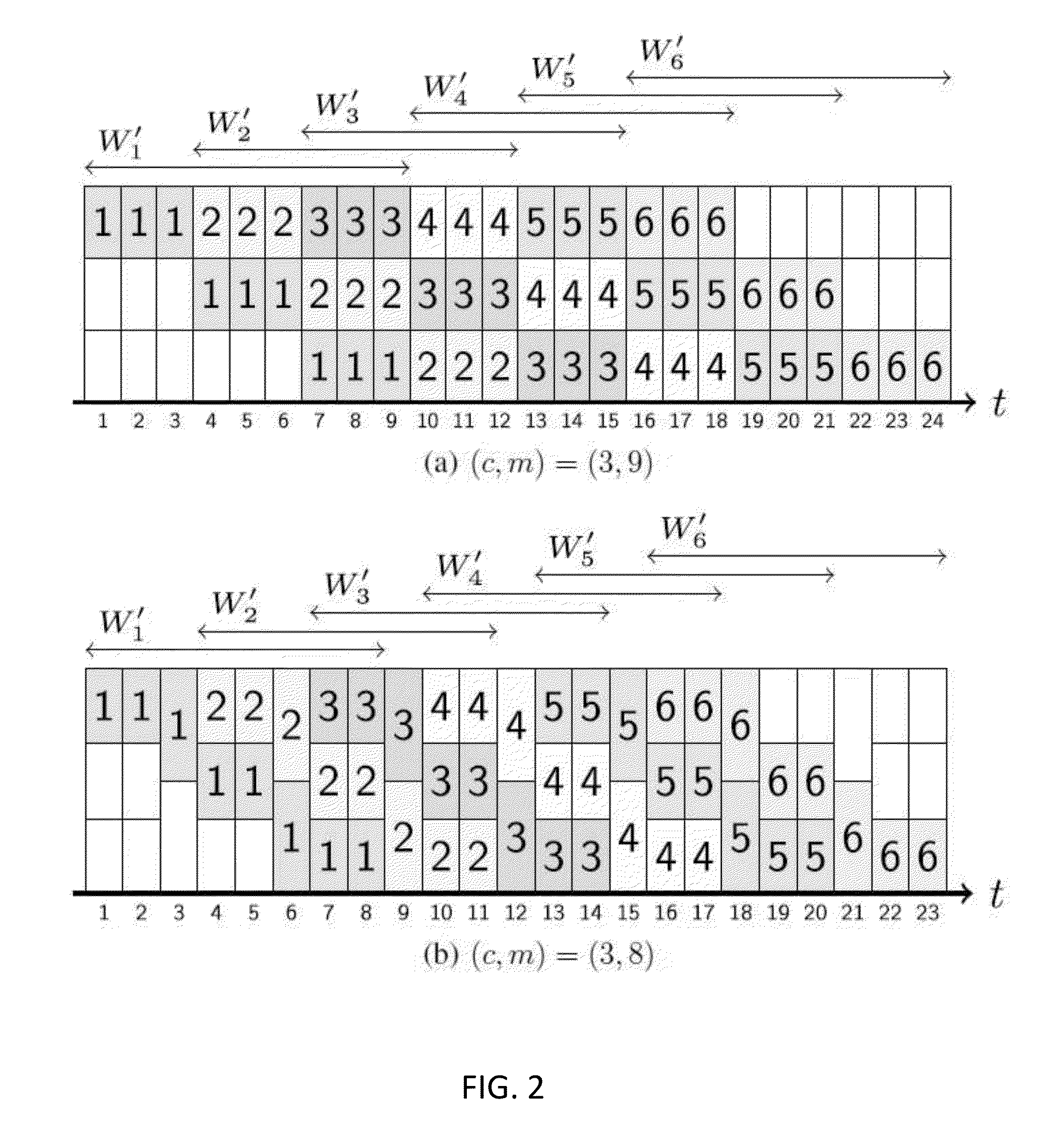Coding for real-time streaming under packet erasures
a real-time streaming and packet erasure technology, applied in the field of real-time streaming systems, can solve the problem that the code design is not explicitly optimized, and achieve the effect of reducing the expected message decoding delay
- Summary
- Abstract
- Description
- Claims
- Application Information
AI Technical Summary
Benefits of technology
Problems solved by technology
Method used
Image
Examples
case a1
[0055]In the case of the symmetric code, the number of active messages at each time step (e.g. t∈+), for a given choice of (c, m), can be explicitly provided, as demonstrated in Annex A1 which makes part of the present disclosure. As described in Annex A1, there are two distinct cases which dictate differing number of active messages for a time step, as defined by the offset quotient and the offset remainder (as previously defined) of integer parameter sets (t, c) and (m, c):[0056]Case a1: If rt,c≦rm,c, then there are qm,c+1 active messages at time step t, each of which is allocated a block of size 1 / (qm,c+1).[0057]Case a2: If rt,c>rm,c, then there are qm,c active messages at time step t, each of which is allocated a block of size 1 / qm,c.[0058]As noted in Annex A1, which makes part of the present disclosure, when m is a multiple of c, then for any time step t, rt,c≦rm,c=c, which implies that there are qm,c+1 active messages at every time step, and therefore all blocks are of size 1 / ...
case b2
where i∈{1, . . . , m}, one can observe that the size of the block that encodes message k at time step (k−1)c+i, which has been defined as xi, depends on the value of ri,c. As demonstrated in Annex A1, which makes part of the present disclosure, two cases are possible:[0060]Case b1: If ri,c≦rm,c, then xi=1 / (qm,c+1). Since i∈{1, . . . , m}, this condition corresponds to the case where qi,c ∈{0, . . . , qm,c} and ri,c∈{1, . . . , rm,c}. Therefore, message k is allocated a small block size 1 / (qm,c+1) per time step for a total of (qm,c+1)rm,c time steps in the effective coding window W′k.[0061]Case b2: If ri,c>rm,c, then xi=1 / qm,c. Since i∈{1, . . . , m}, this condition corresponds to the case where qi,c∈{0, . . . , qm,c−1} and ri,c∈{rm,c+1, . . . , c}. Therefore, message k is allocated a big block size 1 / qm,c per time step for a total of qm,c(c−rm,c) time steps in the effective coding window W′k.
[0062]Other characteristics of the proposed novel family of symmetric time-invariant intra-...
PUM
 Login to View More
Login to View More Abstract
Description
Claims
Application Information
 Login to View More
Login to View More - R&D
- Intellectual Property
- Life Sciences
- Materials
- Tech Scout
- Unparalleled Data Quality
- Higher Quality Content
- 60% Fewer Hallucinations
Browse by: Latest US Patents, China's latest patents, Technical Efficacy Thesaurus, Application Domain, Technology Topic, Popular Technical Reports.
© 2025 PatSnap. All rights reserved.Legal|Privacy policy|Modern Slavery Act Transparency Statement|Sitemap|About US| Contact US: help@patsnap.com



